The Best Paint Roller for a Smooth Paint Finish on Cabinets and Furniture
I’m sharing which paint rollers work best for painting cabinets and furniture along with tips for getting a super smooth paint finish.

This post contains affiliate links which means if you make a purchase after clicking a link I will earn a small commission but it won’t cost you a penny more. Click here to see my full disclosure policy.
Can you get a smooth paint finish with a paint roller?
You absolutely can get a beautifully smooth paint finish using a roller!
I’m in several furniture painting Facebook groups and I see this question come up a lot.
And there are always a couple of people who argue vehemently that the only way to get a smooth paint finish is with a paint sprayer.
Some even go as far as to say you need to have your furniture sprayed at an auto body shop to get a really smooth finish.
That’s just ridiculous.
I’ve painted dozens of pieces of furniture (as well as cabinets) using both a paint sprayer and a brush/paint roller combo. You definitely can get a smooth finish using a paint roller.
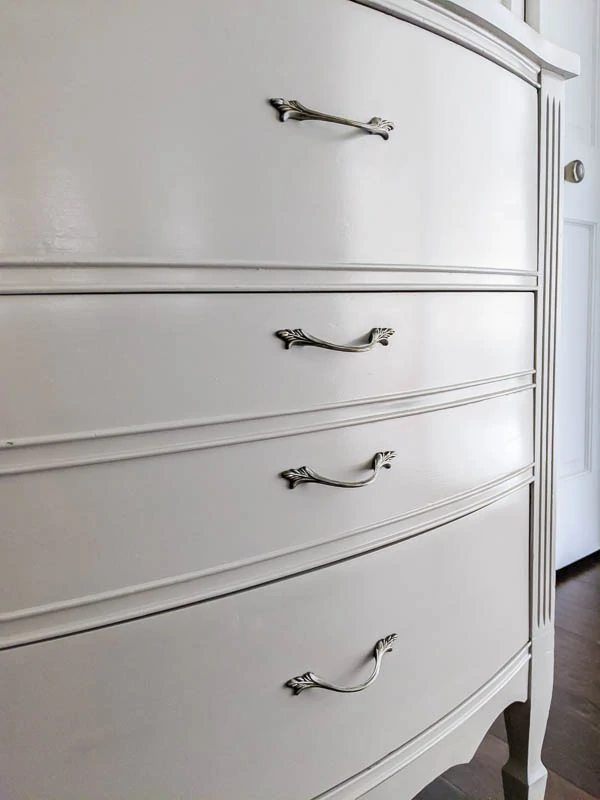
If you examined the paint finish extremely closely, it might not be 100% as smooth as a finish sprayed with a paint sprayer.
But since nobody is going to be examining your furniture with a magnifying glass, a roller will work just fine.
But if you want a really smooth finish, you do need to use the right paint roller and the right painting methods.
High Density Foam Rollers vs Flocked Rollers
I have been using high density foam rollers for years to paint furniture.
These rollers are small, usually 4 or 6 inches wide, and made of foam. They are often labeled as being for smooth surfaces like doors and cabinets.
I’ve always had great results using foam rollers, but recently I decided to do some research and make sure I wasn’t missing out on some other kind of roller that is even better.
I found some recommendations for flocked foam rollers as the best choice for painting smooth surfaces, so I decided to put them to the test.
When I was painting my bathroom vanity, I painted one door using one of my old faithful Whizz brand foam rollers and the other door using a Whizzflock flocked mini roller.
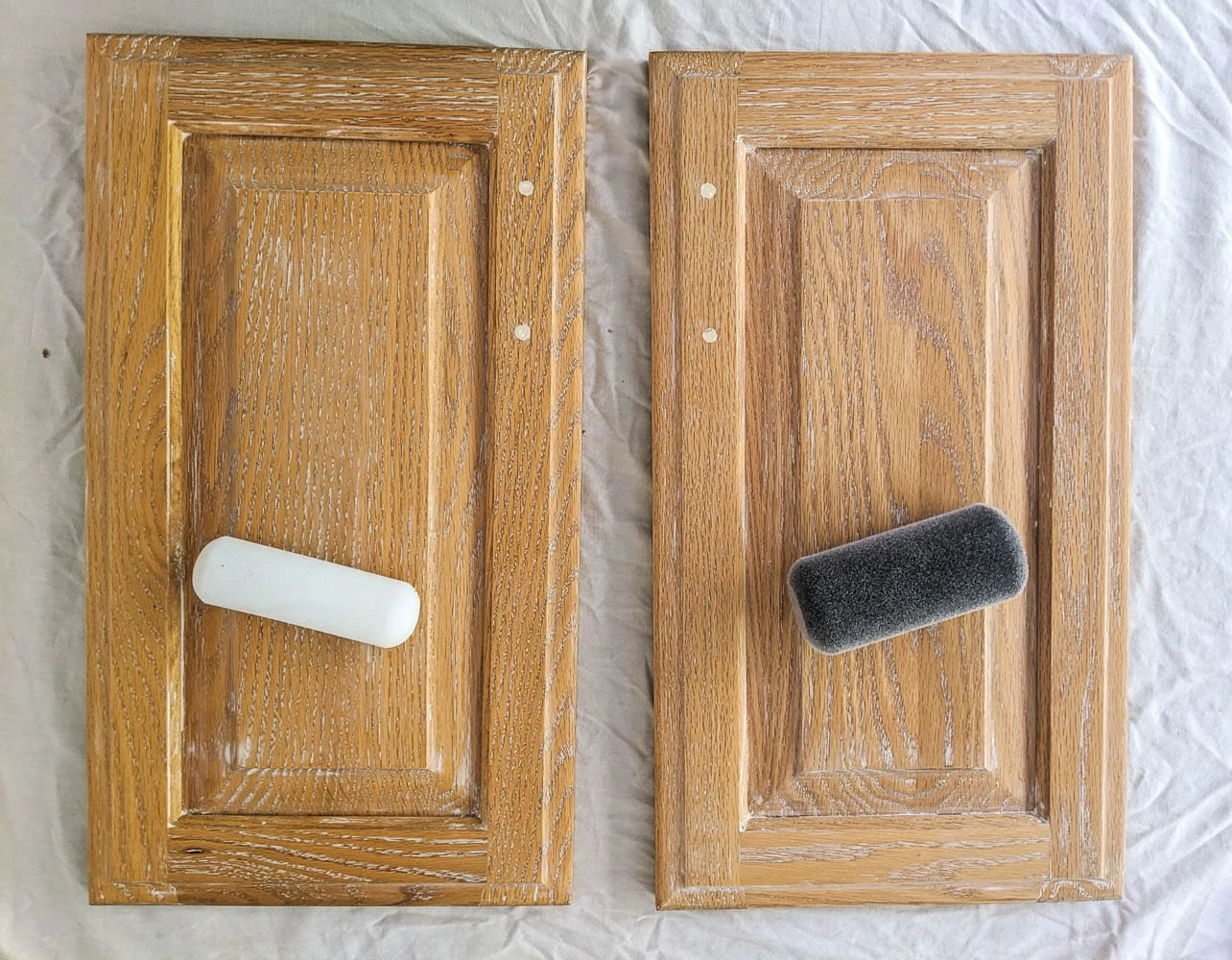
To keep things as fair as possible, I used two rollers made by the same brand and I used the exact same paint on both – General Finishes Milk Paint in Persian Blue.
As I started rolling on the paint I was surprised to see that the flocked roller was leaving a lot of stippling as I rolled on the paint. (Stippling is that orange peel texture that paint rollers sometimes give.)
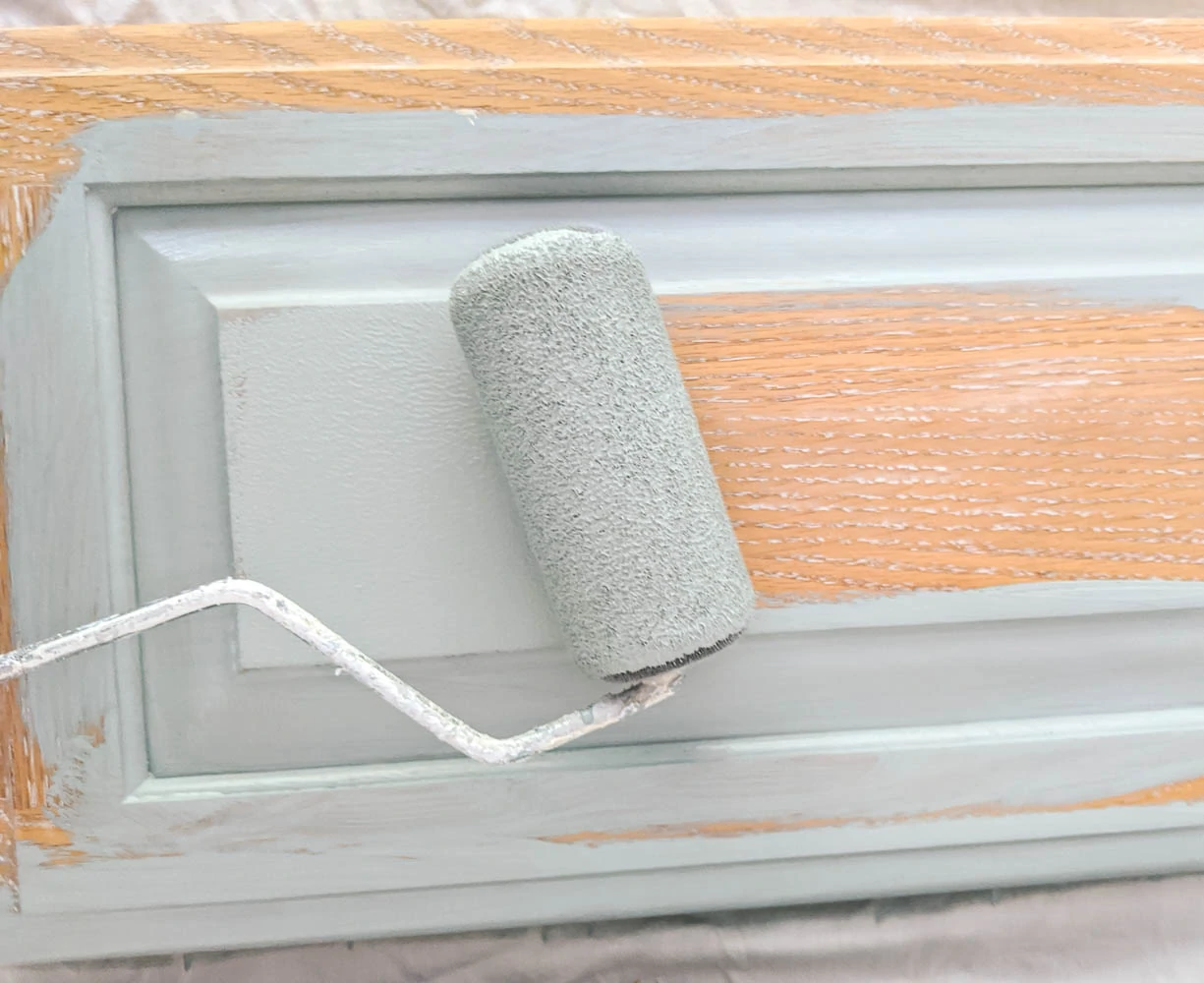
I figured the paint would probably level out more as it dried, but when both doors had dried, one was noticeably smoother than the other.
I really expected it to be close and maybe even too close to call. But instead, the high density foam roller was the clear winner.
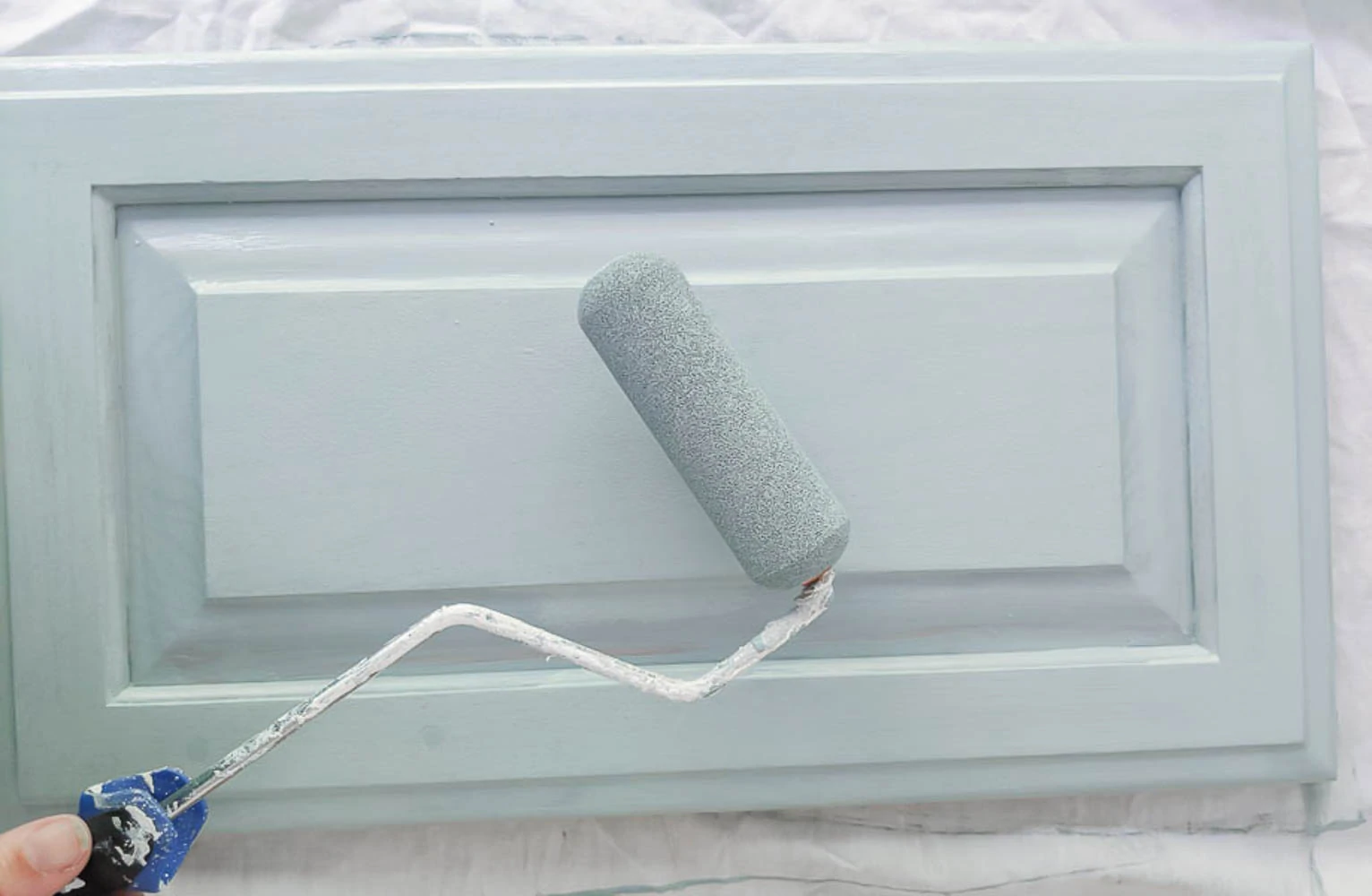
The painted door wasn’t perfectly smooth – especially since this was only the first coat of paint. But it was significantly smoother than the flocked roller door.
The Best Rollers for Painting Furniture
Now I feel even more confident saying definitively that high density foam rollers are the best for getting a smooth finish on cabinets and furniture.
Over the years I have used several different brands of foam rollers and haven’t found a noticeable difference between them. They all give a nice smooth finish.
They typically come in four or six inch sizes. I prefer the six inch size but either is fine. Once you have the roller, you can buy replacement roller covers as needed.
You can wash and reuse the covers, but I prefer to buy new covers pretty frequently. The foam will start to wear down over time and can begin to affect your finish.
Of course having the right roller is only half the battle – you also have to know how to use it!
I’m going to share the basics for getting a smooth paint finish along with some special tricks for when you want your finish to look absolutely perfect.
How to Get a Smooth Finish with a Paint Roller
Materials List
- high density foam paint roller
- high grit sandpaper (220 – 400 grit) – for smoothing your wood and smoothing the painted surface between coats
- high quality paint brush – this is optional but it can really help with getting a flawless finish. This is my favorite paint brush for creating a super smooth finish.
- Floetrol (for water-based paints) or Penetrol (for oil-based paint) – these are optional additives you can add to your paint to help eliminate brush and roller marks.
The first step to getting a really smooth paint finish is to start with a smooth surface. If you are painting a wood surface that is a bit rougher than you’d like, sand it with 220 grit sandpaper to smooth the rough edges.
It also helps to use a great paint.
Most furniture paints and paints that work well for cabinets are self-leveling. This means that as they dry, they smooth out to form an even surface which really helps brush strokes and roller marks disappear.
(If you aren’t sure what paint to use, I have a free paint guide that will really help. Just sign up below.)
Whatever paint you are using, be sure to stir it thoroughly before painting.
Pour your paint into a paint tray and roll your roller in the paint. Be sure to roll your roller around a few times in the beginning to make sure all sides are loaded with paint.
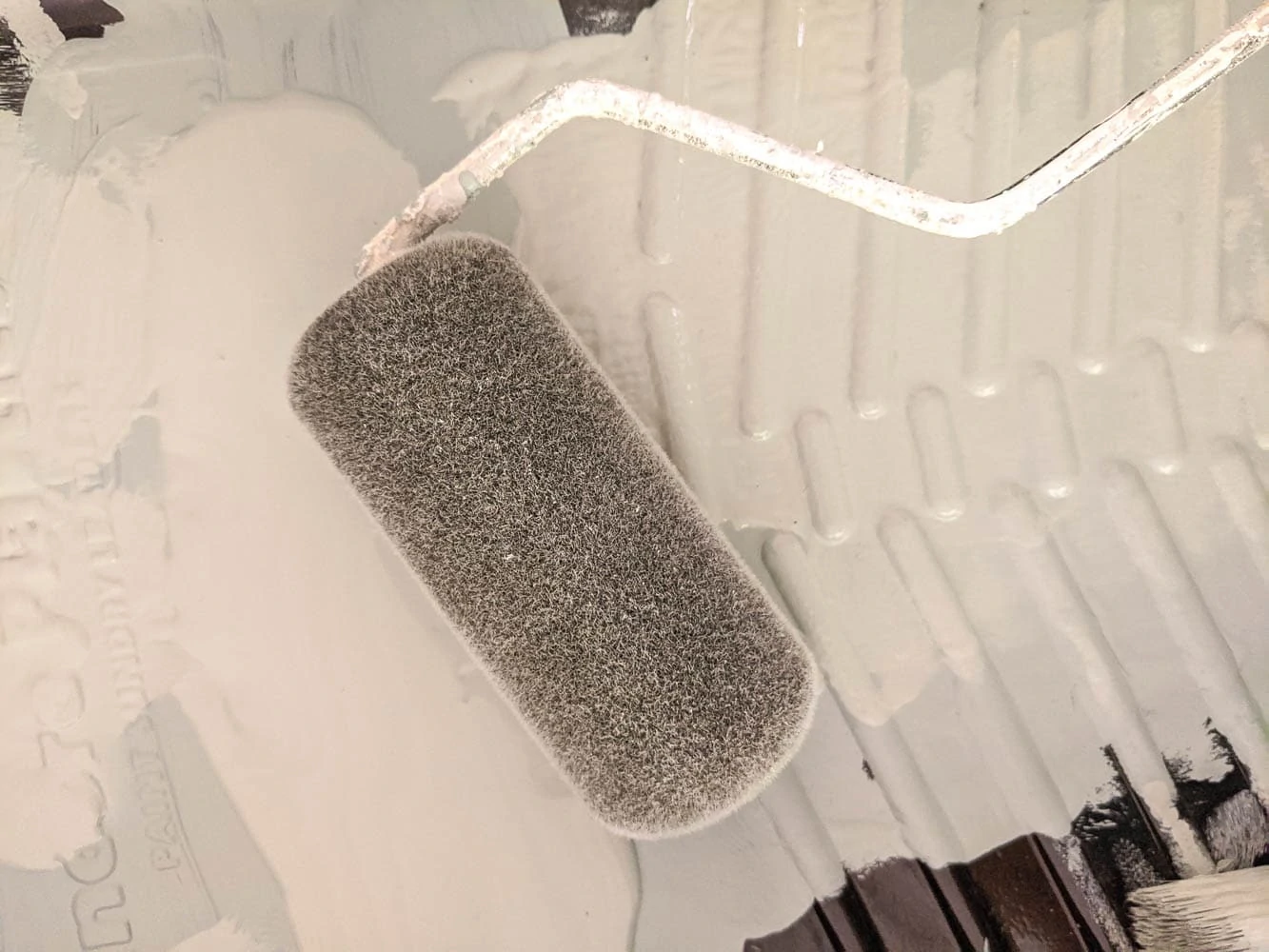
Roll you roller over the ridges and grooves of the shallow side of the paint tray to get rid of any excess paint. You want your paint roller to be damp but not dripping.
Paint with long, even rolls moving from one side of the surface to the other.
Once you have rolled on the first coat of paint, you will probably notice some areas that look like they could use a touch up. It is so tempting to just do another quick roll of paint over those spots, but don’t do it!
When the paint starts to dry, it becomes tacky and if you touch it or roll it, you will actually add to the texture rather than making it smoother.
When the paint has completely dried, you can add a second coat. Once it dries, the second coat should look smoother and more even than the first.
Following these steps should get you a smooth coat of paint.
More Tricks for the Smoothest Possible Paint Finish
If you are going for a super smooth, practically flawless finish, there are a few more tricks that can help.
If your paint isn’t rolling on as smoothly as you want, you can stir in a little water or Floetrol. (Use Penetrol instead if you are using an oil-based paint.)
This will help thin the paint so that it levels more easily, eliminating brush strokes and roller marks. This article is helpful if you want more info on Floetrol and how to use it.
Before your final coat of paint, sand your cabinets or furniture lightly with 300-400 grit sandpaper. This super fine sandpaper will give you a really smooth surface to work with.
If you are noticing a small amount of stippling (orange peel texture) from your roller that remains after the paint dries, you can use a super smooth paint brush to smooth out the texture on the final coat of paint.
Dampen your paint brush with a little water. Immediately after rolling on your paint, lightly run the paint brush over the painted surface using long, even strokes.
Once it dries, you should have a silky smooth texture.
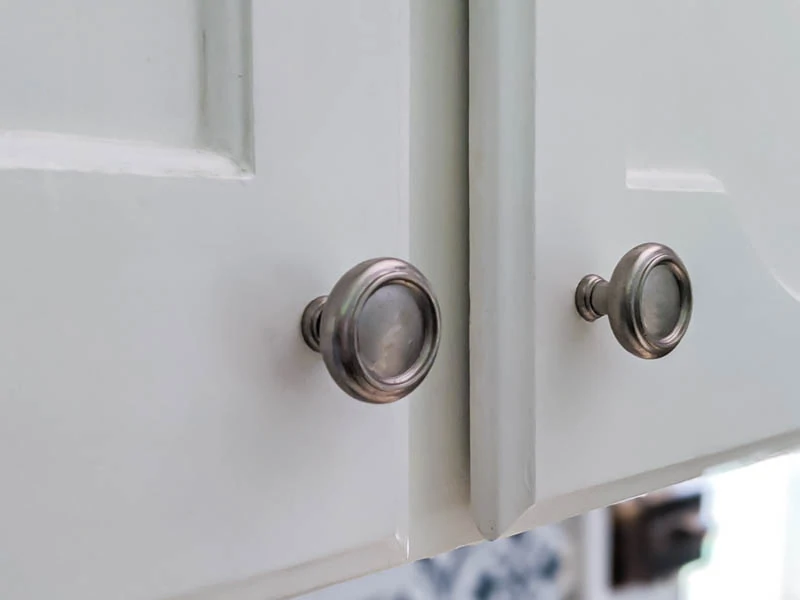
This is the method I used to get a really smooth finish when painting my kitchen cabinets and it worked beautifully.
Want more tips for painting furniture like a pro? Head to one of these posts next:
- The Best Paint Brushes for a Perfectly Smooth Paint Finish
- How to Paint Furniture with the Perfect Finish Every Time
- The Best and Worst Sealers for Painted Furniture
- How to Paint Chairs Super Fast (including how to use a paint sprayer start to finish)
I’d love for you to share this post on Pinterest!
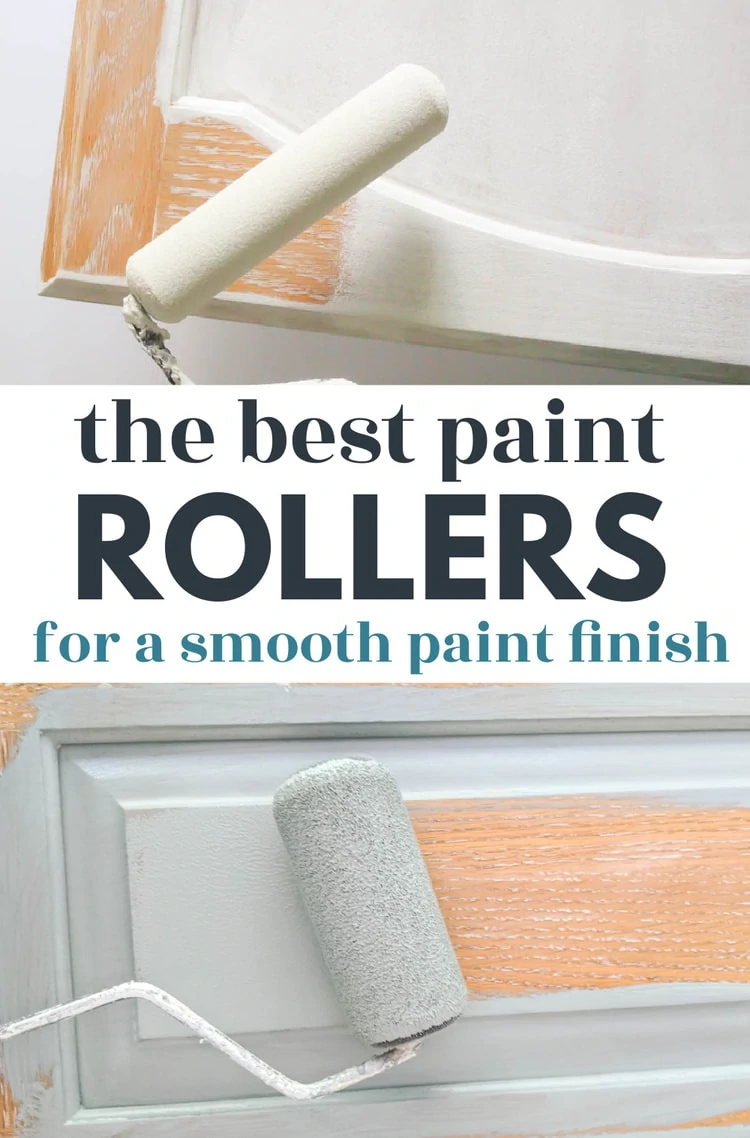


I find I can never paint with a foam roller,
I do paint very often , I own 4 houses , in saying that , I haven’t painted much furniture ,
But I alway find when using a foam roller there are alway little air bubbles after I finish rolling .
Hmm, that’s interesting. I have found that foam rollers do sometimes leave air bubbles but they level out as the paint dries. I’ve also found that if you roll the roller in only one direction, rather than back and forth, it also helps keep it smoother.
Do you dampen the foam roller with water first? I keep seeing articles that say to do that.
Hi Diana, I don’t damped my roller with water first, I just roll it in the paint and it works well. I may try dampening it first next time to see if that makes any difference!
Same thing with me , I do lots of painting , but for the life of me I can’t get a foam roller to work properly